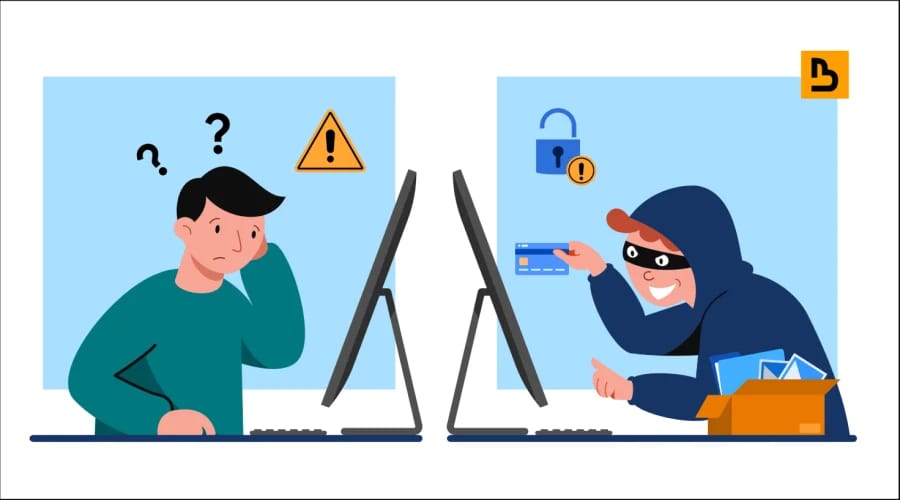
The Alarming Rise of Cybercrime in India: Causes and Consequences
Cybercrime in India is rising sharply due to increased internet usage, weak cybersecurity awareness, and growing digital transactions. Its consequences range from financial loss and identity theft to threats against national security. Social media, fintech, and ransomware attacks exacerbate the problem.
✨ Raghav Jain

Introduction
With the digital revolution sweeping across India, the internet has become an essential part of daily life. From online banking to social media, digital platforms have transformed how we work, communicate, and shop. However, this growing reliance on technology has also brought a dark side—the alarming rise of cybercrime.
Cybercrime refers to illegal activities carried out online, including hacking, identity theft, online scams, ransomware attacks, and cyberbullying. India has witnessed a sharp increase in cybercrimes over the past decade, affecting individuals, businesses, and government institutions alike. The consequences are severe—financial loss, privacy breaches, emotional trauma, and even threats to national security.
In this article, we will explore the causes behind this surge, its consequences, and practical measures to protect ourselves and our digital assets. In recent years, India has witnessed an alarming surge in cybercrime, making it one of the most pressing challenges in the country’s digital landscape. With the rapid adoption of technology, smartphones, and internet connectivity, both individuals and organizations have become increasingly vulnerable to a wide array of cyber threats. The growth of e-commerce, online banking, and digital payment systems, while beneficial for economic development, has simultaneously created fertile ground for cybercriminals. This rise is not merely a technological issue but also a social, economic, and legal concern, demanding urgent attention from authorities, businesses, and citizens alike.
Cybercrime in India manifests in various forms, ranging from identity theft, phishing, and online scams to more sophisticated attacks like ransomware, data breaches, and cyber espionage. Identity theft often targets unsuspecting individuals, exploiting their personal information for financial gain or fraudulent activities. Phishing attacks, where criminals pose as legitimate entities to extract sensitive information, have grown increasingly sophisticated, tricking even cautious internet users. At the organizational level, businesses face threats to their digital infrastructure, including ransomware attacks that lock critical data until a ransom is paid, as well as breaches that compromise confidential information. The consequences of such attacks are profound, often resulting in financial losses, reputational damage, and erosion of consumer trust.
Several factors contribute to the rise of cybercrime in India. The foremost is the rapid digitization of services and increased internet penetration. According to recent statistics, India has over a billion mobile phone users, a significant portion of whom access the internet regularly. This widespread connectivity, while enhancing convenience, also exposes users to online vulnerabilities. Many users lack adequate knowledge of cybersecurity practices, making them easy targets for hackers. Weak passwords, unprotected devices, and negligence regarding software updates amplify these risks. In addition, the digital payment ecosystem, including Unified Payments Interface (UPI), digital wallets, and online banking, has become a prime target for cybercriminals, as financial gains can be immediate and substantial.
Another critical factor is the lack of stringent cybersecurity awareness among the general population. Despite government initiatives and public campaigns, many people remain unaware of basic online security measures. The absence of digital literacy in rural and semi-urban areas further exacerbates the problem. Users often unknowingly click on malicious links, share sensitive information on unsecured platforms, or fall prey to social engineering tactics. Cybercriminals exploit these gaps skillfully, demonstrating that technology alone cannot prevent cybercrime; human awareness and vigilance are equally crucial.
Moreover, organized crime networks and professional hacking syndicates have become more prevalent in India. These groups operate with high levels of sophistication, often working across international borders, making detection and prosecution challenging. Cybercrime is no longer an isolated act by individuals seeking quick gains; it has transformed into a structured criminal enterprise that can target government institutions, multinational corporations, and critical infrastructure. Attacks on power grids, financial institutions, and healthcare systems highlight the potential national security implications of this growing threat. The ease of anonymity on the internet further emboldens criminals, as tracing perpetrators remains a complex and time-consuming process.
The legal framework in India, while evolving, struggles to keep pace with the rapid advancements in technology. The Information Technology Act, 2000, serves as the primary legislation addressing cybercrime, but it often falls short in tackling sophisticated cyber offenses. Enforcement is hampered by inadequate technical expertise within law enforcement agencies, limited resources, and the challenges of cross-border investigations. While cybercrime reporting mechanisms exist, many cases go unreported due to fear, lack of awareness, or perceived procedural difficulties. This underreporting perpetuates the problem, allowing criminals to continue their activities with minimal risk of punishment.
The consequences of cybercrime are far-reaching. Financial losses are the most immediate and tangible impact, affecting both individuals and businesses. Victims of online scams may lose life savings, while companies face operational disruptions, ransom demands, and data theft. Beyond financial implications, cybercrime also undermines trust in digital platforms, which can stifle technological adoption and innovation. Individuals may hesitate to engage in online transactions, and businesses may become wary of investing in digital solutions, slowing economic growth. Additionally, cybercrime can have psychological effects, including stress, anxiety, and a sense of vulnerability, particularly for victims of identity theft or harassment.
Furthermore, the rise of cybercrime in India has significant implications for national security. Attacks on government databases, critical infrastructure, and defense systems can compromise sensitive information and disrupt essential services. As India advances toward a digital economy, the intersection of technology and security becomes increasingly crucial. The country must not only address immediate cyber threats but also develop a resilient digital ecosystem that can withstand future challenges. This requires collaboration between government agencies, private enterprises, cybersecurity experts, and citizens to create a holistic approach to prevention, detection, and response.
To combat this growing menace, a multi-pronged strategy is essential. Public awareness campaigns, cybersecurity education, and skill development can empower citizens to protect themselves. Organizations must adopt robust security protocols, including regular audits, data encryption, and employee training. Law enforcement agencies need specialized training, resources, and international cooperation to investigate and prosecute cybercriminals effectively. Legal reforms, including updates to existing legislation, can provide clearer definitions of cyber offenses and stronger deterrents. By addressing both the technological and human aspects of cybercrime, India can mitigate risks and build a secure digital environment.
In conclusion, the alarming rise of cybercrime in India is a reflection of the challenges inherent in rapid digital transformation. While technology brings immense benefits, it also exposes vulnerabilities that cybercriminals exploit with increasing sophistication. Financial, social, and national security implications make this an urgent issue requiring immediate action. A combination of public awareness, legal reform, organizational diligence, and national coordination is crucial to counter cybercrime effectively. As India continues to embrace the digital age, safeguarding its citizens and infrastructure from cyber threats will determine not only the success of its technological progress but also the safety and trust of its people in the digital realm.
Understanding Cybercrime in India
Cybercrime involves crimes that target digital information, computers, or networks. It can be broadly categorized as:
- Financial cybercrime: Online banking fraud, phishing scams, digital wallet theft.
- Identity theft: Stealing personal data to commit fraud.
- Hacking and malware attacks: Breaking into systems or planting viruses.
- Cyber harassment: Cyberbullying, online stalking, or defamation.
- Corporate cyber threats: Attacks on businesses to steal data or demand ransom.
Good cyber hygiene is crucial. Without it, sensitive information—bank details, Aadhaar numbers, passwords—can easily fall into criminal hands. The rise of smartphones, widespread internet penetration, and limited awareness have made India a prime target for cybercriminals.
Causes Behind the Rise of Cybercrime in India
1. Rapid Digitization
India’s push for digital payments, online services, and government e-platforms has created opportunities for cybercriminals. While digitalization brings convenience, it also opens multiple entry points for attacks.
2. Lack of Cyber Awareness
Many individuals and small businesses are unaware of online threats. Weak passwords, sharing OTPs, or clicking suspicious links make them easy targets.
3. Anonymity on the Internet
Cybercriminals exploit anonymity to commit crimes without fear of immediate detection. Fake accounts, VPNs, and untraceable transactions make it difficult for law enforcement to track them.
4. Social Engineering
Hackers use deception to manipulate people into revealing confidential information. Phishing emails, fake job offers, and fraudulent messages are common examples.
5. Inadequate Cybersecurity Infrastructure
Many organizations still lack advanced cybersecurity measures. Outdated software, unsecured networks, and lack of employee training contribute to vulnerabilities.
6. Growth of E-commerce and Online Payments
The rise of digital wallets, UPI, and online shopping platforms has increased incidents of financial fraud. Fraudsters often exploit unverified sellers or unsecured payment gateways.
Consequences of Cybercrime
1. Financial Loss
Cybercrime can lead to direct monetary loss. Bank frauds, phishing scams, and online scams drain savings and damage trust in digital platforms.
2. Data Breach and Privacy Violations
Personal information such as Aadhaar numbers, PAN, email accounts, or passwords can be stolen and misused. Data leaks compromise privacy and lead to identity theft.
3. Emotional and Psychological Impact
Victims of cyber harassment, cyberbullying, or financial fraud experience anxiety, stress, and depression. Online abuse has severe mental health consequences.
4. Impact on Businesses
Companies face reputation loss, legal issues, and operational disruption due to hacking or ransomware attacks. Cybercrime can also erode customer trust in digital services.
5. Threat to National Security
Critical infrastructure, government databases, and defense networks are increasingly targeted. Cyber attacks can disrupt public services, electricity grids, and communication systems.
Daily Practices to Stay Safe Online
For Individuals:
- Use strong, unique passwords for each account.
- Enable two-factor authentication (2FA) wherever possible.
- Avoid clicking unknown links or downloading attachments from suspicious emails.
- Update your devices and software regularly.
- Verify the source before sharing personal information online.
- Educate family members about online scams and phishing attacks.
For Businesses:
- Conduct regular cybersecurity audits.
- Train employees on safe online practices.
- Install updated antivirus and firewall systems.
- Backup data frequently to prevent loss during attacks.
- Monitor network activity to detect unusual behavior.
Weekly Cybersecurity Habits
- Review bank and financial statements for unusual activity.
- Change passwords for sensitive accounts.
- Scan devices for malware or suspicious applications.
- Stay updated on the latest cybercrime trends and scams.
- Test your knowledge of phishing emails by practicing caution with unknown messages.
Common Cybercrime Myths: Busted!
“Cybercrime only happens to big companies.”
→ False! Individual users are often more vulnerable than organizations. Even small lapses can lead to identity theft or financial fraud.
“I have antivirus software, so I am safe.”
→ Not entirely true. Antivirus helps but doesn’t protect against phishing, social engineering, or data leaks. Awareness and vigilance are key.
“Strong passwords are enough.”
→ Partially true. Strong passwords help, but two-factor authentication, software updates, and cautious online behavior are equally important.
“Cybercrime cannot happen to me because I’m tech-savvy.”
→ Incorrect. Even tech-savvy individuals fall prey to well-designed scams or fake websites.
“Public Wi-Fi is safe to use.”
→ Not safe. Public Wi-Fi networks are often unsecured and can be exploited by hackers to intercept sensitive data.
Cybercrime Prevention Tips for Everyday Life
- Avoid oversharing: Keep personal information private on social media.
- Verify websites: Ensure URLs start with “https://” before entering sensitive details.
- Monitor accounts: Set up alerts for banking and financial transactions.
- Educate yourself: Stay informed about the latest scams circulating online.
- Use secure networks: Avoid public Wi-Fi for banking or confidential work.
- Report cybercrime: Notify authorities if you fall victim to a scam or fraud.
Conclusion
The rise of cybercrime in India is a growing concern that affects everyone—individuals, businesses, and the government. Rapid digital adoption, lack of awareness, and sophisticated cybercriminal techniques have made online spaces vulnerable. The consequences are wide-ranging, from financial loss and data breaches to emotional trauma and threats to national security.
However, prevention is possible through awareness, vigilance, and proactive cybersecurity measures. Simple steps like using strong passwords, enabling two-factor authentication, avoiding suspicious links, and monitoring accounts can significantly reduce risk. For businesses, employee training, regular audits, and robust digital defenses are essential.
Cybersecurity is not just a technical issue—it’s a shared responsibility. Each of us must take conscious steps to protect our personal information, stay alert to potential threats, and report incidents promptly. Awareness and daily habits are our first line of defense.
India’s digital future is promising, but it can only remain secure if citizens, organizations, and the government work together to tackle cybercrime head-on. Start today by securing your digital life—your vigilance can prevent cybercriminals from exploiting you tomorrow.
Stay alert. Stay informed. Stay safe online.
Q&A Section
Q1:- What is cybercrime and why is it a growing concern in India?
Ans :- Cybercrime refers to illegal activities conducted through the internet or digital devices, including hacking, identity theft, and online fraud. India’s increasing internet penetration and digital transactions have made it a prime target.
Q2:- What are the main causes behind the rise of cybercrime in India?
Ans :- Causes include lack of cybersecurity awareness, weak passwords, outdated software, social engineering attacks, insufficient law enforcement expertise, and rapid digitization without proper safeguards.
Q3:- How do social media platforms contribute to cybercrime?
Ans :- Social media exposes personal data, enabling phishing, stalking, cyberbullying, and financial scams, making users vulnerable to identity theft and emotional exploitation.
Q4:- What role does financial technology (FinTech) play in cybercrime incidents?
Ans :- Digital banking, e-wallets, and online payment systems attract hackers due to large transaction volumes, weak authentication, and phishing schemes, leading to financial fraud and data breaches.
Q5:- How does ransomware affect Indian businesses and individuals?
Ans :- Ransomware locks critical data until a ransom is paid, disrupting operations, causing financial losses, compromising sensitive data, and eroding trust in digital services.
Q6:- What are the legal consequences for cybercriminals in India?
Ans :- Offenders can face prosecution under the Information Technology Act, 2000, and related sections of the Indian Penal Code, including imprisonment, fines, and liability for financial damages.
Q7:- How do cybercrimes impact the economy and national security?
Ans :- Cyberattacks can result in monetary losses, intellectual property theft, disruption of critical infrastructure, and threats to national defense and public safety.
Q8:- Why is cybersecurity awareness crucial for citizens and organizations?
Ans :- Awareness helps individuals recognize phishing, malware, and unsafe practices, while organizations can implement protocols, training, and secure networks to reduce vulnerability.
Q9:- How is the Indian government addressing cybercrime?
Ans :- Initiatives include establishing the Indian Cyber Crime Coordination Centre, implementing the IT Act, conducting awareness campaigns, and encouraging reporting of online fraud and breaches.
Q10:- What preventive measures can reduce cybercrime risks in India?
Ans :- Strong passwords, two-factor authentication, regular software updates, cautious sharing of personal information, employee training, and legal compliance are essential to mitigate cyber threats.
Similar Articles
Find more relatable content in similar Articles

Cloud PCs: Will Your Next Comp..
Cloud PCs are transforming the.. Read More

From Phishing to Data Theft: ..
Cybercrime in India is evolvi.. Read More

Digital inclusion: designing d..
Designing technology for elder.. Read More

Digital Privacy in 2025: How S..
In 2025, digital privacy faces.. Read More
Explore Other Categories
Explore many different categories of articles ranging from Gadgets to Security
Smart Devices, Gear & Innovations
Discover in-depth reviews, hands-on experiences, and expert insights on the newest gadgets—from smartphones to smartwatches, headphones, wearables, and everything in between. Stay ahead with the latest in tech gear
Apps That Power Your World
Explore essential mobile and desktop applications across all platforms. From productivity boosters to creative tools, we cover updates, recommendations, and how-tos to make your digital life easier and more efficient.
Tomorrow's Technology, Today's Insights
Dive into the world of emerging technologies, AI breakthroughs, space tech, robotics, and innovations shaping the future. Stay informed on what's next in the evolution of science and technology.
Protecting You in a Digital Age
Learn how to secure your data, protect your privacy, and understand the latest in online threats. We break down complex cybersecurity topics into practical advice for everyday users and professionals alike.
© 2025 Copyrights by rTechnology. All Rights Reserved.